Backblaze just released its new 2023 hard drive reliability stats for 35 different models and over a quarter million drives. We started covering the company back in 2011 but have not covered the Backblaze reliability studies since 2022. The new set of 2023 data is out, so we figured we would highlight a few bits for our readers.
Backblaze Releases 2023 Hard Drive Reliability Stats for 35 Models
Here is the full set of 35 different drive models. What is remarkable is that there are still some Seagate and Toshiba models out there at 103-104 months making them over 8.5 years old.
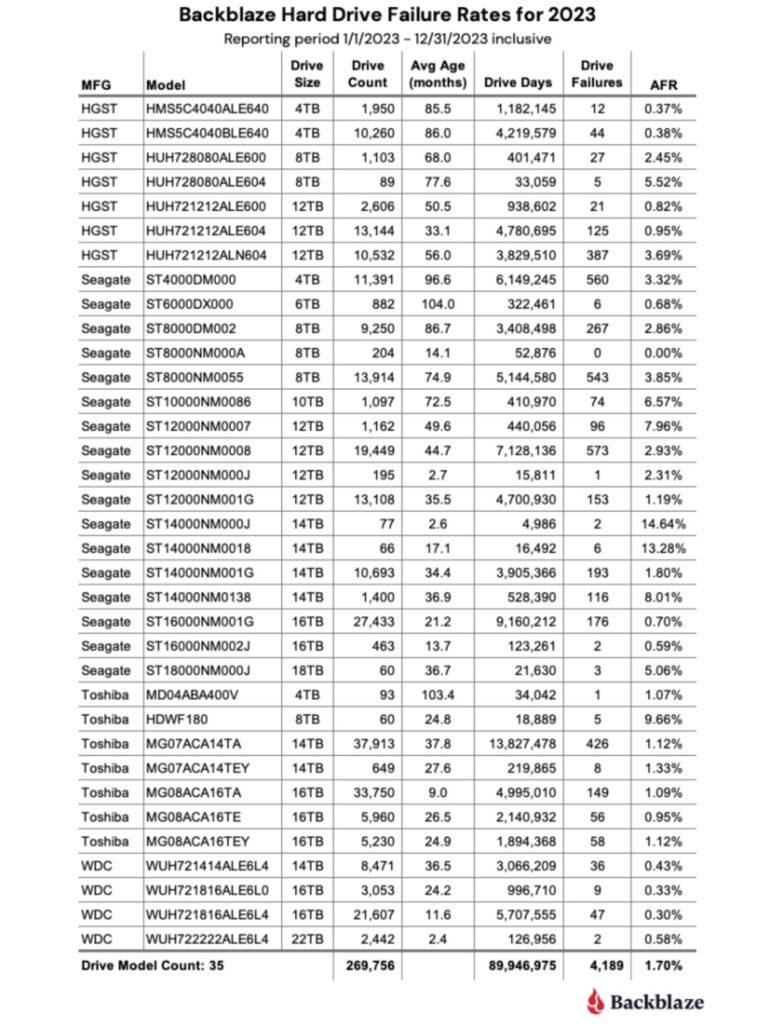
Here is the chart with the smaller drive populations pulled out and then shown annually. What is interesting here is that the AFR has been creeping up for the last three years.
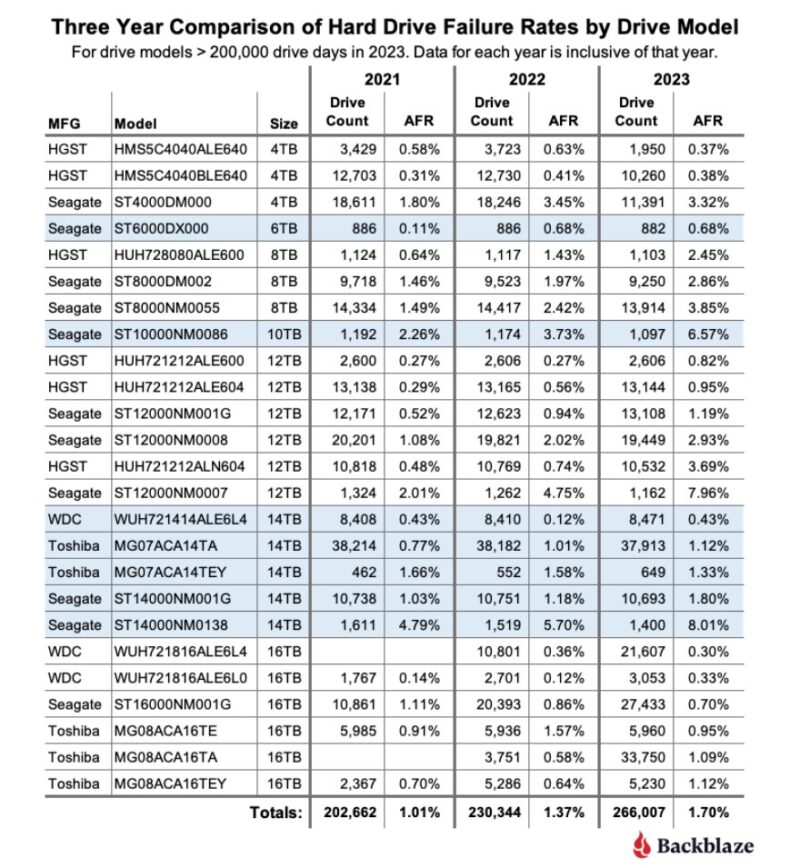
Something that Backblaze did was to pull out AFR by drive size (across vendors) over time. While many of Seagate’s other capacities seem to struggle, those 6TB Seagate drives seem to be awesome.
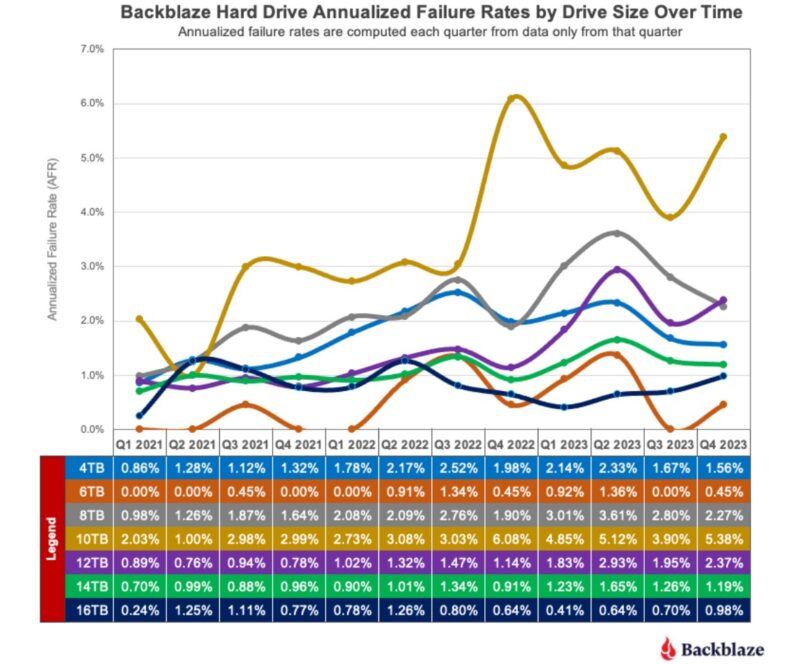
The company also showed its AFR by age for its larger drive populations and showed those by vendor.
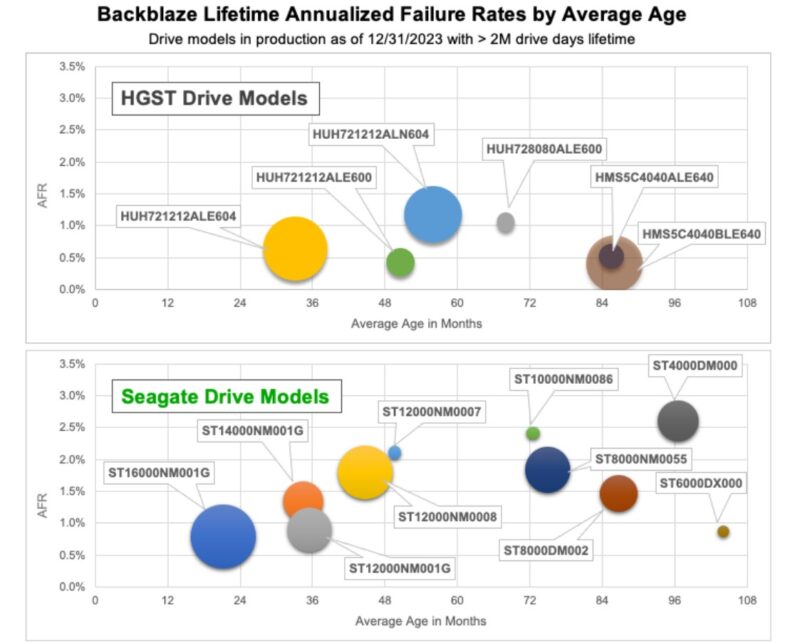
They have HGST and Seagate above and Toshiba and WD below.
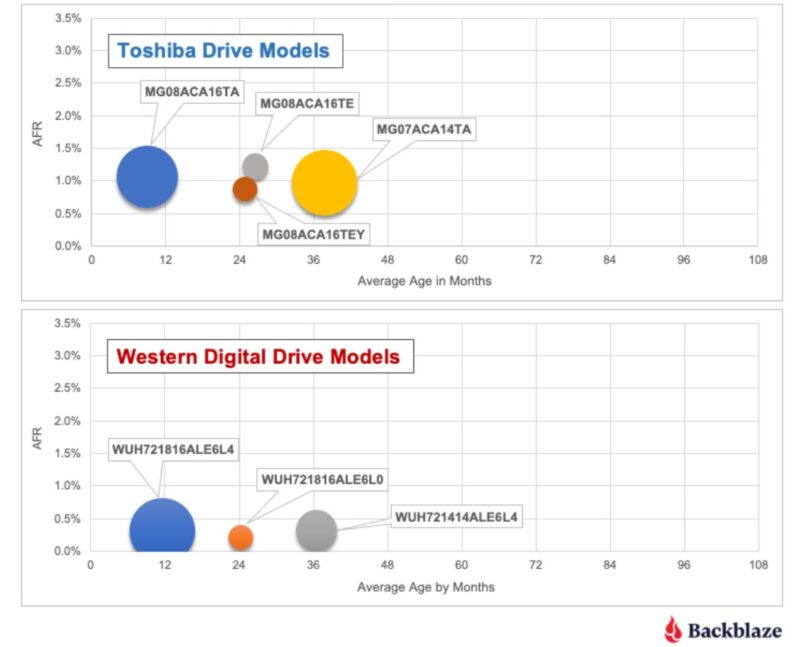
Under 36 months, no drive is over 1.5% AFR. After 36 months, there is not a huge amount of data for other manufacturers, but Seagate drives are the ones crossing the 1.5% threshold.
Final Words
Looking at the first two charts, Seagate has a lot of high failure rate percentage drives. Then, looking at the drives by age, we do not have data on WD or Toshiba, but it is hard to look at the HGST (now WD) and Seagate chart and not notice a difference over time.
Years ago, Backblaze’s use of Seagate’s consumer drives in their vertically mounted storage chassis caused a big commotion at Seagate because of the higher AFR. That seems to have opened a dialog between Seagate and Backblaze and changed the drives that Backblaze uses. If you have seen STH reviews and noticed that we use Seagate Exos X12’s as props in many reviews, it is because we saw a high failure rate like Backblaze did with the drives. If you have a large population of drives, then a small discount likely makes Seagate drives worth it. If you have a small number of drives, it is hard to ignore the differences in AFR.

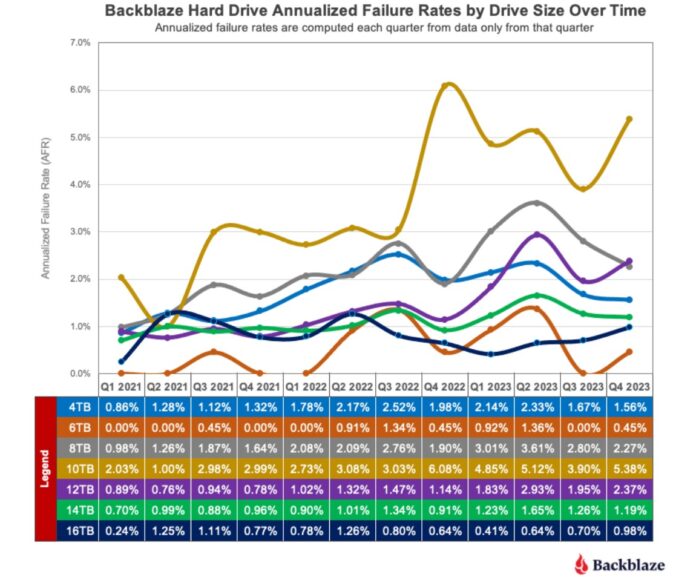

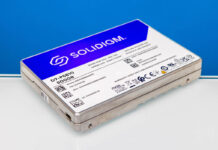
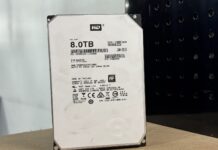
With the industry consolidated to 2 players even backblaze doesn’t have much of a choice if the quality goes down. How long before they have to make their own( or buy a manufacturer ? Is that even possible? What’s the relative size of the companies?) or move to SSD?
Have over 30 WESTERN DIGITAL HDD. Some of these are over 15 years old. Some are just for archive so seldom accessed, others used a lot for video editing and a back up copy. They do a lot of work.
Never one failure so far. Had others earlier, some good some not so. A couple of brands very inconsistent. Hence now nearly all are WD.
I agree about WD, the only now and the best.
I was “young” and fooled by Seagate’s marketing as they are the first who offered bigger drives, but quality…
All my Seagate drives died, sooner or later…
And I still have 2TB WD Green with variable rate 5400-7200 from that series that was problematic and it’s in warning state and used for temporary download for over a decade and keep running despite everything
sigh. i miss HGST. booted up my first NAS about 9 years ago w/ 5x 4tb HGST drives. it’s been running 24/7 ever since aside from one house move (professional photo backup, family photo backup, 6 camera surveillance setup, movie server, etc – not super taxing, but always on). Upgraded two of the original drives around year 3 to 10tb HGST drives for more storage. had one of the original 4tb drives fail last year. replaced it w/ a WD Ultrastar DC 12tb HC520.
i don’t expect to get the same usable life out of it, time will tell
I’ve still got verbatim 5 1/4 and 8 inch floppy disks that are older than all of those hard drives mentioned and still working reliably. I suppose I should consider updating them to those new fangled 3 1/2 inch disks.
Yeah, personal experience. Everyone loves and recommends whatever gear they’ve got until it goes bang, and some people have bad experiences with the very drives others are recommending. It’s the luck of the draw.
Most of my WD Green drives failed a few weeks or months after the warranty ended in the 640GB-4TB days… The others failed a few months before the warranty ended. No Red’s back then, had to set up TLER yourself.
When I pulled the 640GB array after 4-5 years it had none of the original drives. The 2TB array had one.
I went with Seagate 6TB after but made a mistake with block sizes when creating the MD Raid (I think), performance was abysmal. Went to HGST 6TB, used them from ~2014 to 2022 with no failures, not even a blemish on the SMART values.
With HGST gone, it was hard to find new drives to expand the array. Sold the HGST, went to Seagate Ironwolf 12TB about a year ago. So far it’s all good, no complaints.
Those HGST drives will die well after the Seagates for sure…